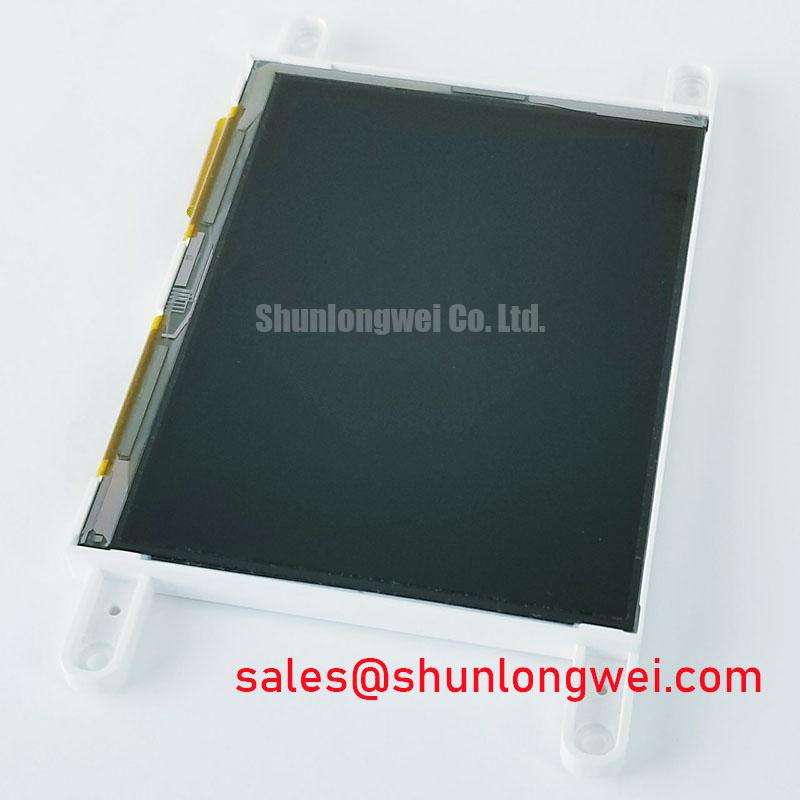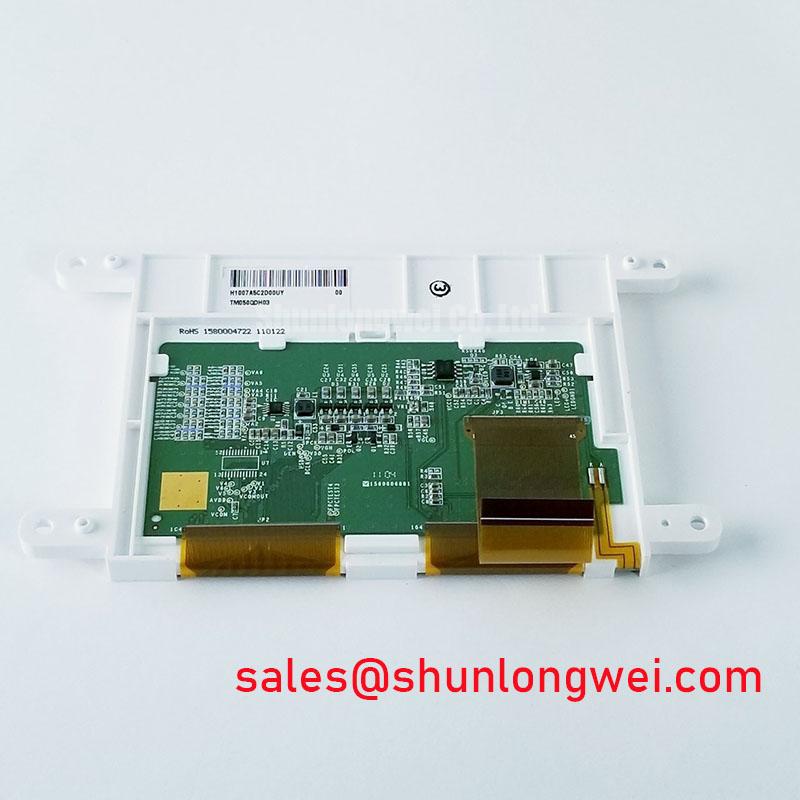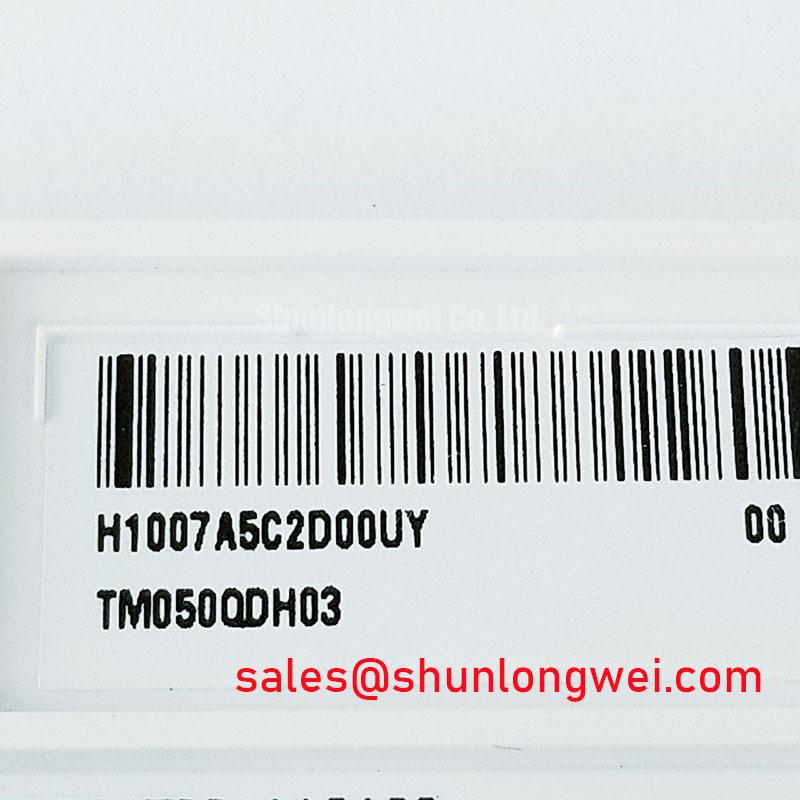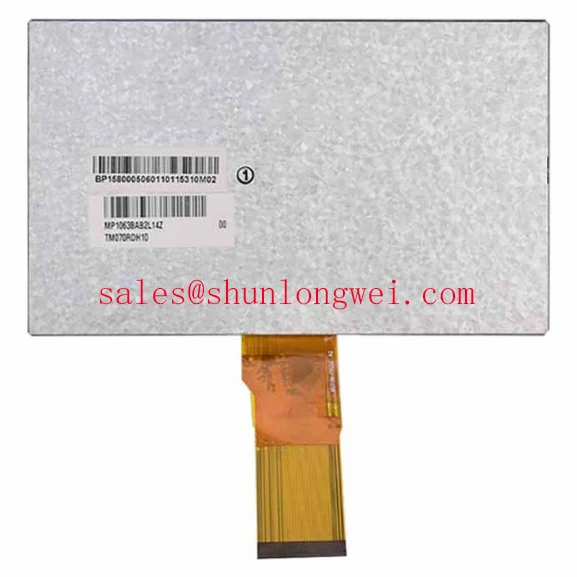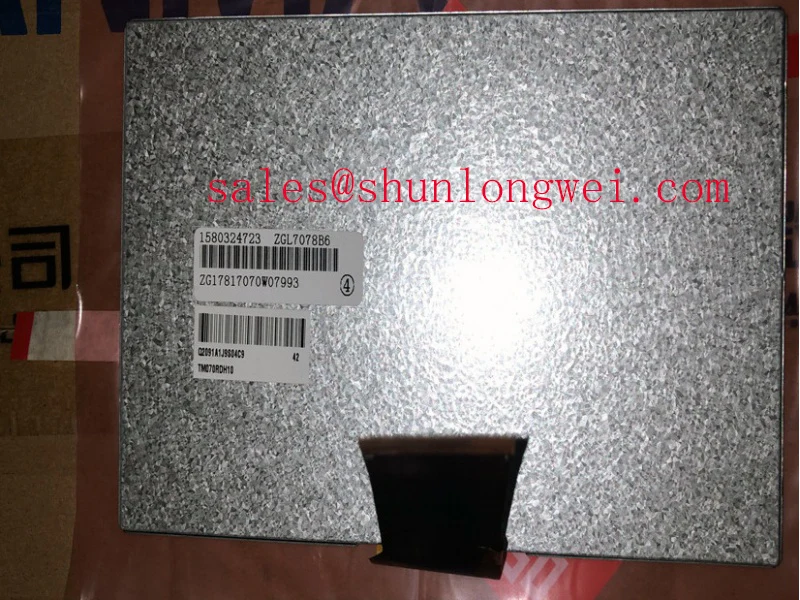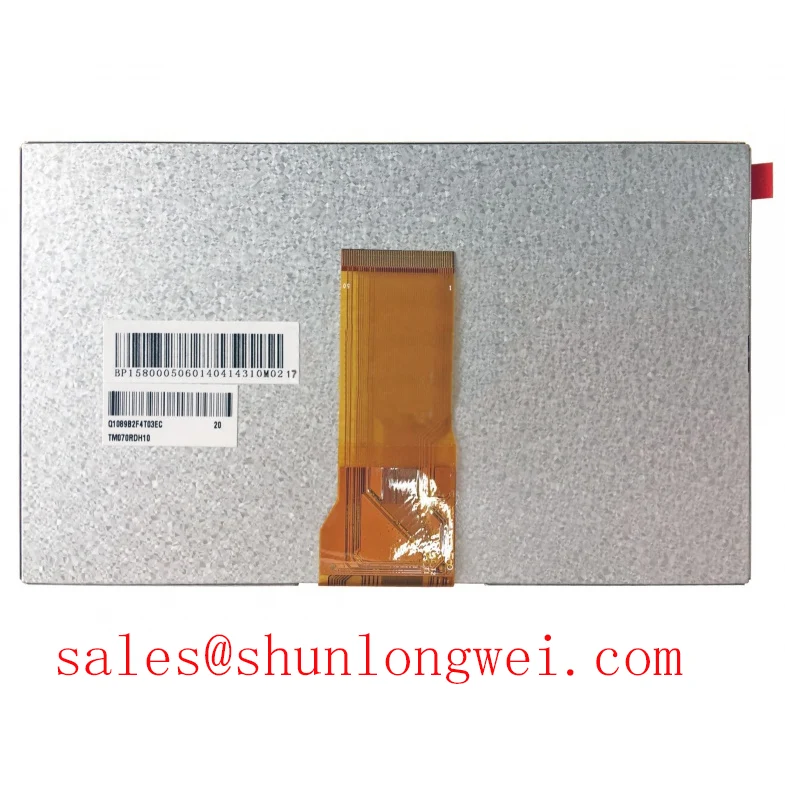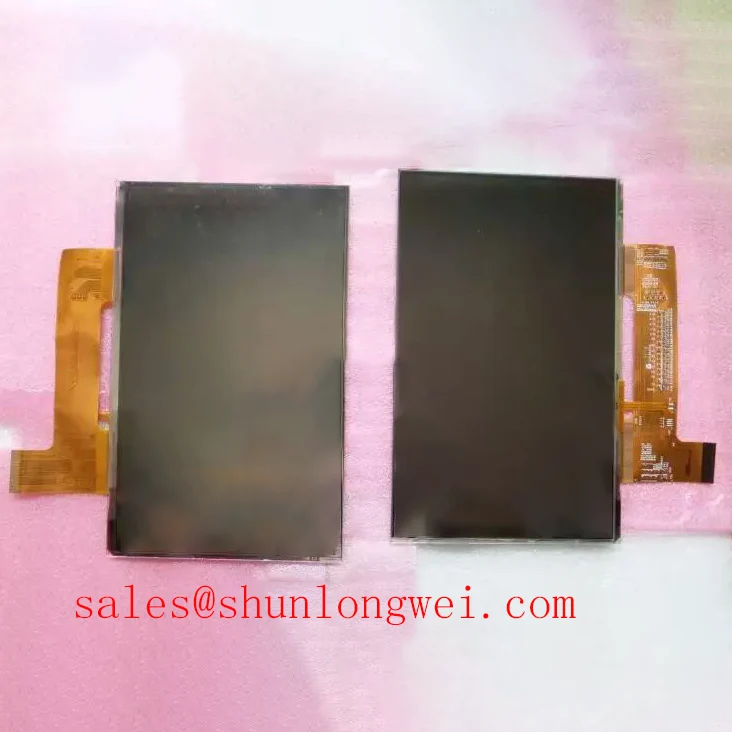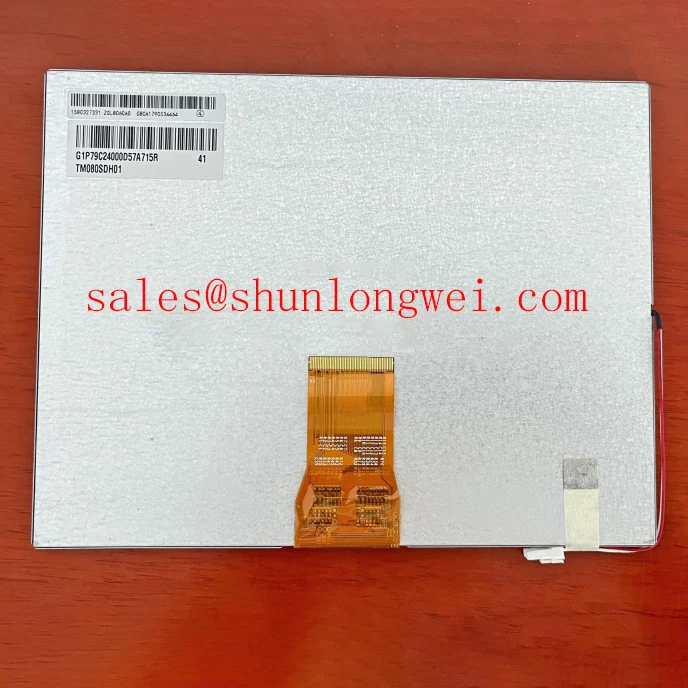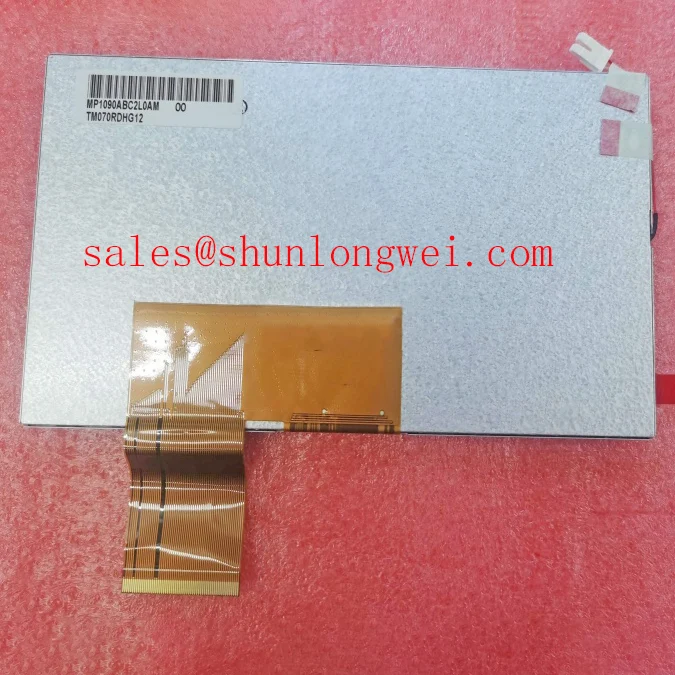Content last revised on November 19, 2025
TM050QDH03: 5.0-inch VGA Industrial TFT-LCD Module
Introduction & Core Features
Engineered for Clarity and Durability in Demanding Environments
The Tianma TM050QDH03 is a 5.0-inch a-Si TFT-LCD module engineered for operational reliability and clear visualization in industrial and instrumentation applications. It delivers a sharp 640x480 VGA resolution, ensuring detailed graphical user interfaces. Key specifications include: 350 cd/m² Brightness | 500:1 Contrast Ratio | Parallel RGB + SPI Interface. This module provides a robust display solution with its antiglare surface and hard coating for enhanced durability. What is the key benefit of its standard interface? Simplified integration with a wide array of embedded systems and single-board computers. For applications requiring a higher WVGA resolution in a similar form factor, the related AT080TN64 presents an alternative design path. This display's balanced performance makes it a prime candidate for systems where long-term readability and physical resilience are critical design criteria.
Application Scenarios & Value
System-Level Benefits in Industrial Control and Instrumentation
The TM050QDH03 is optimally suited for integration into devices where a compact, reliable human-machine interface (HMI) is essential. Its 4:3 aspect ratio and VGA resolution are a perfect match for legacy and new industrial control panels, portable diagnostic tools, and data loggers that require clear, unambiguous readouts without the complexity of high-definition interfaces.
Consider a portable environmental monitoring device used in field service. The challenge for the design engineer is to specify a display that remains readable under various lighting conditions and can withstand incidental contact and abrasion. The TM050QDH03 directly addresses this with its 350-nit brightness and antiglare surface. Its Parallel RGB interface simplifies the connection to common microcontrollers, reducing development time and BOM complexity for the TFT-LCD driver circuitry. This focus on fundamental robustness and ease of integration provides significant value, ensuring the final product is both dependable and efficient to manufacture.
Key Parameter Overview
Decoding the Specs for System Integration and Performance
The technical specifications of the TM050QDH03 are tailored for straightforward implementation and consistent visual performance in targeted applications. The following table highlights the key parameters and their direct engineering implications.
| Parameter | Value | Engineering Value & Interpretation |
|---|---|---|
| Display Technology | a-Si TFT-LCD, TN, Normally White | Provides a cost-effective and proven technology base with fast response times, suitable for dynamic content in HMIs and monitoring systems. |
| Resolution | 640(RGB) x 480 [VGA] | Offers sufficient pixel density (160 PPI) on a 5.0-inch screen for sharp text and clear graphics, a standard for many industrial GUI frameworks. |
| Brightness | 350 cd/m² (Typ.) | Ensures solid readability in typical indoor industrial and medical environments. Think of it as bright enough to overcome factory floor lighting glare. |
| Contrast Ratio | 500:1 (Typ.) | Delivers clear differentiation between blacks and whites, which is critical for legibility and reducing operator eye strain during long shifts. |
| Viewing Angle | 70/70/70/60 (L/R/U/D) (Typ., CR≥10) | Provides adequate viewing flexibility for stationary equipment where the operator is typically positioned directly in front of the screen. |
| Interface Type | Parallel RGB (1 ch, 8-bit) + SPI | A widely supported interface that simplifies driver development and hardware integration with a vast range of processors, minimizing engineering overhead. |
| Surface Treatment | Antiglare, Hard Coating (3H) | Reduces distracting reflections and enhances scratch resistance, directly improving the display's durability and usability in real-world conditions. |
| Outline Dimensions | 113.6 x 88.4 x 10 mm | Provides a compact and robust mechanical footprint, suitable for integration into space-constrained enclosures like portable instruments or control pendants. |
Technical Deep Dive
A Closer Look at the Parallel RGB and SPI Interface
The TM050QDH03 features a Parallel RGB interface supplemented by an SPI (Serial Peripheral Interface) channel. This dual-interface approach provides a powerful combination of speed and control for embedded system designers. The parallel interface is the workhorse for display data; it transmits red, green, and blue data simultaneously over dedicated lines, along with timing signals like dot clock and horizontal/vertical sync. This method is analogous to a multi-lane highway, allowing a high volume of pixel data to be transferred quickly and efficiently, which is essential for achieving a smooth 60Hz refresh rate without requiring complex data compression or high-speed serialized transceivers.
The inclusion of the SPI interface provides a low-pin-count, simple method for configuring the display's internal registers. This is used for initialization commands, setting parameters like gamma correction, or controlling specific functions without burdening the main data bus. This separation of high-speed data and low-speed control simplifies the design of the host processor's software driver and can reduce electromagnetic interference (EMI) by isolating control signals from the high-frequency pixel clock. For engineers, this means faster integration and more predictable system behavior, a crucial advantage in industrial automation hardware development.
Industry Insights & Strategic Advantage
The Enduring Role of VGA Displays in Industrial Systems
While consumer electronics have rapidly moved to higher resolutions, the VGA (640x480) format, as featured in the TM050QDH03, maintains a strategic position in the industrial and medical sectors. The primary driver for this is system stability and lifecycle management. Industrial equipment often has a service life exceeding a decade, and replacing or re-qualifying a core component like an HMI can be prohibitively expensive. By using a standard resolution like VGA, manufacturers ensure backward compatibility with established software and hardware platforms, minimizing the need for costly re-engineering.
Furthermore, the data processing requirements for a VGA display are significantly lower than for HD or Full HD panels. This allows system designers to use more cost-effective, lower-power microcontrollers or single-board computers, which are often preferred in embedded systems for their thermal efficiency and reliability. The TM050QDH03 capitalizes on this by providing a modern, reliable TFT-LCD panel from a reputable manufacturer like Tianma in a format that aligns perfectly with the industry's focus on total cost of ownership (TCO) and long-term product availability over cutting-edge specifications.
Frequently Asked Questions (FAQ)
What is the typical application for a TN panel like the one in the TM050QDH03?
TN (Twisted Nematic) panels are known for their fast response times and cost-effectiveness, making them ideal for industrial HMIs, system control panels, and instrumentation where data is displayed dynamically and needs to be updated quickly without motion blur.
How does the 3H hard coating benefit an industrial application?
The 3H rating indicates a significant level of resistance to scratches and surface abrasion. In an industrial setting, where the display might be touched by tools, gloves, or cleaning agents, this coating protects the screen, ensuring long-term clarity and preventing damage that could obscure critical information.
Is the 350-nit brightness sufficient for outdoor use?
A brightness of 350 cd/m² is excellent for indoor environments, including brightly lit factories or medical facilities. For direct sunlight readability, however, displays with significantly higher brightness levels (typically 800 nits or more) are recommended. This module is optimized for indoor or heavily shaded outdoor conditions.
What does "Normally White" mean for this display's behavior?
"Normally White" is a characteristic of the liquid crystal mode. It means that if a pixel fails or loses power, it will default to a white or transparent state. This can be a predictable failure mode in some applications, preventing a screen from going completely black if a small section of the driver electronics fails.
Can the SPI interface be used to send pixel data?
No, the SPI interface on the TM050QDH03 is designed for command and control functions—initializing the display controller and setting operational parameters. The high-bandwidth pixel data must be sent over the parallel RGB interface to achieve the full refresh rate and color depth.
Design & Integration Support
An Engineer's Perspective on Implementation
From an integration standpoint, the TM050QDH03 is a pragmatic choice for embedded systems. Its use of a standard 3.3V logic level simplifies power rail design, aligning with the I/O voltages of most modern microcontrollers. The physical design, with a flat rectangular shape and defined mounting points, facilitates straightforward mechanical integration into a NEMA enclosure or custom front panel. Engineers should pay close attention to the datasheet's timing requirements for the parallel RGB signals to ensure signal integrity, especially on longer PCB traces. Implementing a proper ground plane and considering trace length matching for the clock and data lines will be key to achieving a stable, flicker-free image and reliable long-term performance.

